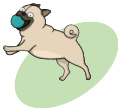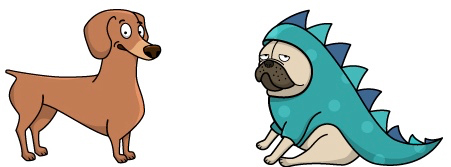Canine joint diseases

In this edition of PetLife Tips, we’ll talk about canine joint diseases. In particular, patellar dislocation, a common condition in dogs.
What is patellar dislocation?
Patella is the bone most people know as the kneecap. The patella is located in the thigh bone’s patellar groove. Patella supports the smooth movement of the knee to bend and stretch by moving up and down in this patellar groove. Patellar dislocation is the illness in which the patella is displaced inward or outward from the normal position. It is especially common in small dogs and toy breeds.
Unfortunately, repetitive dislocation will cause deformity of the bone and arthritis. Cartilage on the knee is worn down and the depth of the patellar groove reduces, which increases the frequency of dislocation. This may lead to abnormal gait. Dogs with patellar dislocation are known to be at higher risk for anterior cruciate ligament tearing. Congenital causes include innate shallow patellar groove, bad bone structure and abnormality in the tissue around the knee (muscle or ligament). Trauma from accidents or injuries can also cause this.
What are the symptoms?
Depending on the degree of progression, patella dislocation is classified from grade 1 to grade 4. The higher the grade is, the more frequent the dislocation.
| Grade | Symptoms |
| 1 | Almost no symptoms can be seen at this stage, but in rare cases, affected dogs may yelp and raise their hind legs while walking. |
| 2 | At the time of dislocation, the hind leg will not reach the ground. The dislocated patella will return to its original position as the dog bends and stretches its hind leg, or if the patella is pushed into place by hand. |
| 3 | The patella is always dislocated. Walking abnormalities such as walking with the hind legs bent and the hips down are observed. If you push by hand, it will temporarily return to the patellar groove. |
| 4 | The patella is always dislocated and will not return to its original position, even when pushed by hand. Affected dogs may walk without fully extending their legs. |
Patellar dislocation can be diagnosed by physical examination, so we recommend having your dog’s knees checked when you come in for vaccinations or other examinations. Depending on the condition, an X-ray may be taken to diagnose the degree of deformation or osteoarthritis.
Treatment
Treatment depends on the degree of clinical symptoms. When dislocation happens only rarely, possible treatments include improvement of household environment and weight loss in case of obesity to reduce the burden on the knee. If your dog has pain, administration of painkillers and supplements, and exercise restriction will help. However, these measures are only to reduce the burden on the knee, and it will not cure the issue completely. Therefore, if your dog has frequent gait abnormalities or pain, surgery is recommended. Recovery from the surgery depends on your dog’s ability to cage-rest, so take your dog’s character into consideration when choosing this option.
In dogs under 1 year old, muscles and ligaments which support the knee are weak. This feature can contribute to the rapid progression of bone deformity caused by dislocation, and walking difficulty may be observed. Early surgery should be considered in these cases. Dogs struggling with this illness for an extended period of time, may still experience walking difficulties even after various combinations of surgery and treatment, so consulting with your vet as early on as possible is recommended.
How to slow progression
Weight management is important. By reducing stress on the knee joint due to obesity, it is possible to prevent symptoms worsening. It is also important to make adjustments to your household environment. If the floor is slippery, put down non-slip flooring. Also, make sure to trim your dog’s nails and the hair between their paws regularly, as your dog will slip more easily when the hair and nails are overgrown. Please be aware that vigorous exercises that put stress on joints, such as jumping and running in circles, may cause the condition to worsen.
Pay attention to the way your dog walks for early detection!

